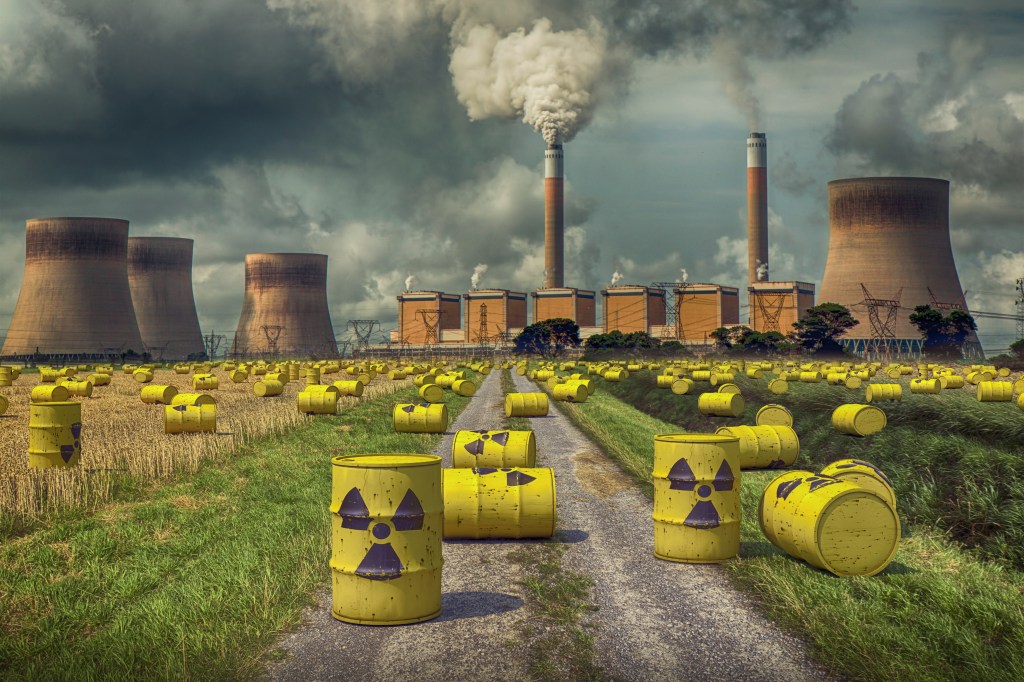Russian President Vladimir Putin annexed swathes of occupied Ukrainian territory on Friday and has sworn to defend them using everything in Russia’s arsenal, including nuclear weapons, reviving fears of nuclear conflict as Moscow grows increasingly desperate to shore up its flagging war effort. Here’s what to do.

Putin formally annexed four Russian-occupied regions of Ukraine on Friday following a string of referendums held this week.
The votes were widely viewed as an obvious pretext for annexation and have been widely denounced as an illegitimate “sham.” Putin made it clear that Moscow now considers the regions—not all of which are completely under its control—non-negotiable parts of Russia that will be defended by all means necessary.
This includes using nuclear weapons, Putin said last week, reiterating a threat he has uttered numerous times before but world leaders are treating seriously.
The spectre of nuclear power has long haunted Ukraine and it has loomed large throughout Russia’s invasion.
Within days of invading, Russian troops seized the Chernobyl nuclear power plant, digging trenches, looting and disturbing materials at the site of the world’s worst nuclear accident. Moscow also showed little regard for longstanding international norms and rules governing conflict and nuclear power and its forces also took control of Europe’s largest nuclear power plant at Zaporizhzhia.
The situation at the plant sparked global concern and ignited fears of another nuclear catastrophe in Ukraine as it repeatedly came under fire on the front lines, with both Kyiv and Moscow trading blame and accusing the other of courting disaster.
The United Nations has proposed making the area a demilitarised zone and the future of the plant—which is located in territory Russia now claims but does not completely control—is uncertain.
Health authorities warn against using hair conditioner when showering or washing after a nuclear explosion. Rather than washing away radioactive materials, conditioners can trap them in the hair and prevent it from rinsing out easily.
It is hard to predict the specific details of a Russian nuclear strike in Ukraine. Experts told Forbes that Putin would be very unlikely to deploy the larger weapons in Russia’s arsenal as this would leave Moscow very little room to maneuver or escalate further if desired.
Instead, Putin would probably opt for a tactical nuclear warhead, a smaller, short-ranged device designed for use on the battlefield. Tactical weapons are much smaller than the strategic long-range warheads designed to destroy cities but they can still be devastating, Dr. Rod Thornton, a security expert at King’s College London, told Forbes.
With nuclear weapons, however, power is a relative concept. The largest tactical devices can still be as big as 100 kilotons, where 1 kiloton equals the power of 1,000 tons of TNT. For comparison, the bombs the U.S. dropped on Hiroshima and Nagasaki had respective estimated yields of 15 kilotons and 21 kilotons. Predicting possible targets is also difficult, though Thornton said it is unlikely Putin would target a Ukrainian city in an initial strike.
The odds of Moscow targeting anywhere outside of Ukraine are incredibly slim.
A nuclear attack would be mostly a symbolic “signaling device” for Moscow to show it is serious and is willing to defend itself, he explained.
Putin could try and avoid casualties all together in an initial strike, Thornton said, floating Snake Island, the Black Sea outpost taken early in the war by Russia that was recaptured and became a symbol of Ukrainian resistance, as one possible target.
The looming threat of various nuclear disasters has increased demand for iodine pills in Ukraine and surrounding countries.
The pills—in the form of potassium iodide—can help protect against the radioactive iodine that can be released in a nuclear accident.
“They saturate the thyroid with iodine and block the uptake of the radioactive form,” Higley explained.
They need to be taken regularly to remain effective if there is radioactive iodine in the environment, however, and Higley warned the pills could provoke “severe reactions” in people with certain medical conditions such as an allergy to iodine.
Even in Russia, sales of iodine pills and radiation meters have spiked as nuclear concerns mounted during the war.
5,977 – that’s how many nuclear warheads Russia has, according to an estimate by the Federation of American Scientists (FAS), more than any other country. It narrowly trumps the U.S., which follows with an estimated 5,428 warheads, according to FAS.
Collectively, Russia and the US have approximately 90% of the world’s nuclear weapons. Ukraine, Kazakhstan and Belarus inherited weapons in the fall of the Soviet Union but returned these to Russia. South Africa is the only country to have relinquished nuclear weapons after building its own.
This article was first published on forbes.com
Here’s What Would Happen If Putin Ordered A Nuclear Strike In Ukraine (Forbes)